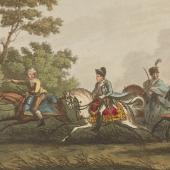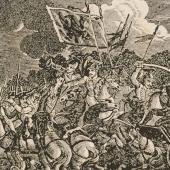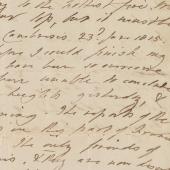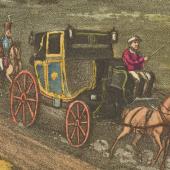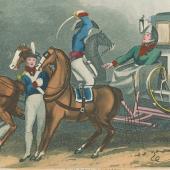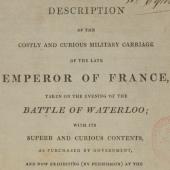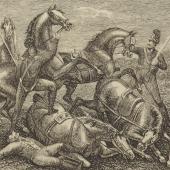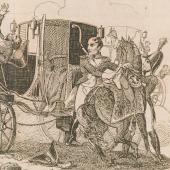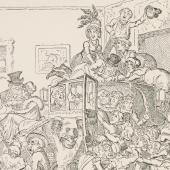Napoleon’s carriage
A damned serious business
For most of the battle, Napoleon remained in the vicinity of La Belle Alliance, an inn near the centre of his line from which he had a good general view of the field. When units of the Imperial Guard made the final French attack on Wellington’s position at the climax of the battle, Napoleon moved part of the way forward with these battalions, falling back when the assault failed. As retreat turned to rout, he joined the general exodus of his army, boarding his personal carriage, built for the Russian campaign of 1812 and drawn by a team of six horses. After nightfall, at Genappe, about four miles south of Waterloo, where the road became congested crossing a narrow bridge, a detachment of Prussian fusiliers under Major von Keller caught up with Napoleon: the Emperor barely escaped being captured, and took to horseback to continue his flight into France. The carriage in due course became von Keller’s property, and he afterwards brought it to England and sold it to the British government for 3,500 guineas; in 1816 it was put on display at the London Museum in Piccadilly, where it made large sums for the proprietor, William Bullock. The tale of the vehicle’s capture, and accounts of its lavish contents, fascinated contemporaries: the carriage was depicted in numerous engravings, and its iconography forms a sub-set of the outpouring of pictorial representations relating to Waterloo. Acquired by Madame Tussaud’s museum in the 1840s, along with numerous other Napoleonic relics, the carriage was eventually destroyed in a fire at the waxwork exhibition in 1925.
